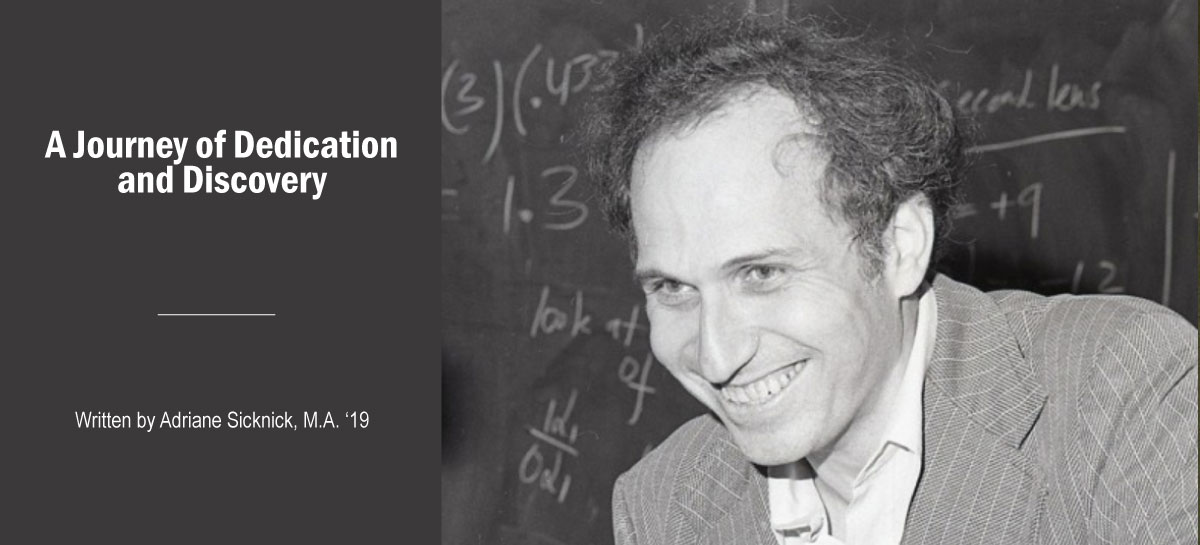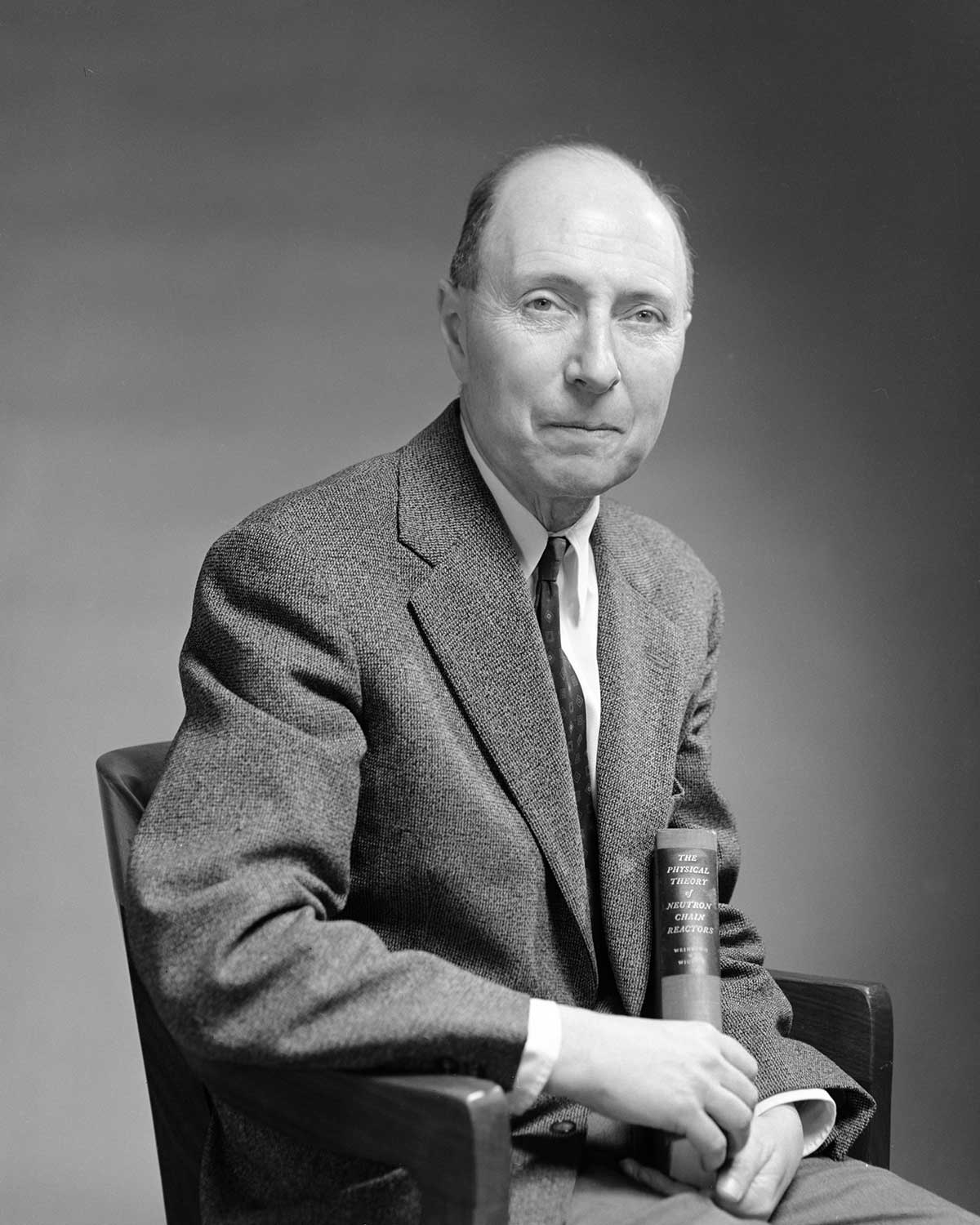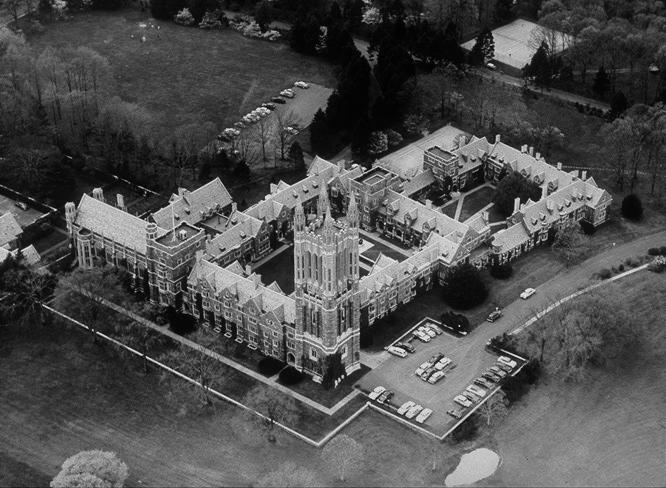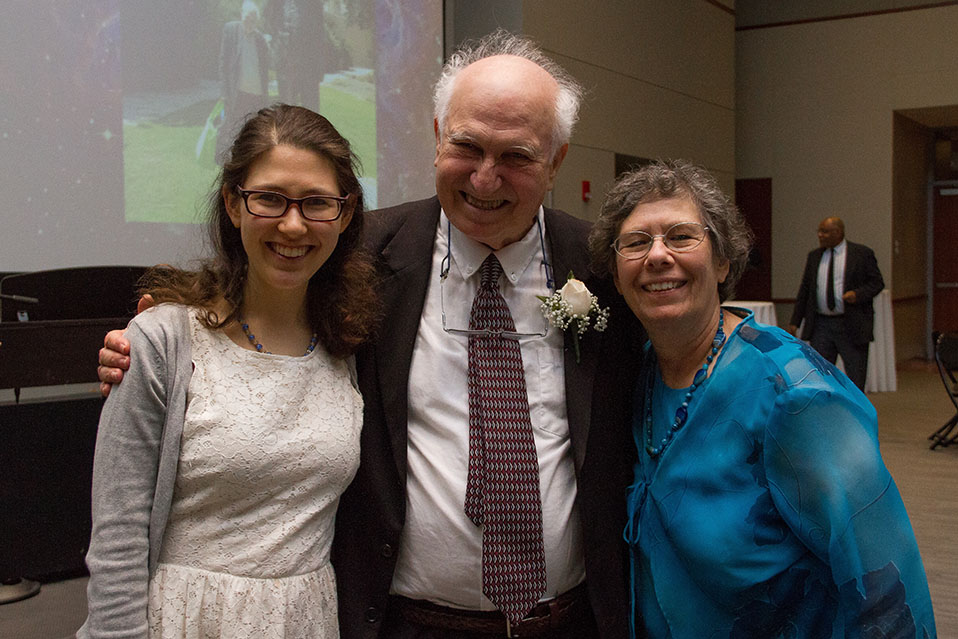A Journey of Dedication and Discovery

Photo Credit: Stockton University.
Stockton’s Physics Program stands a figure whose journey spans over five decades. A man whose passion for physics and teaching has inspired countless students and colleagues alike.

Distinguished Professor of Physics Yitzhak Sharon’s love for physics began during his undergraduate days at Columbia University, where he was initially enrolled as an electrical engineering student. However, after reading an exciting textbook about the unexplored complexities of the atom, he switched his major to physics in his junior year. The excitement of exploring the unknown, coupled with a strong foundation in mathematics, set the stage for a lifelong pursuit of knowledge.
After earning his bachelor’s degree, Sharon continued his studies at Princeton University, where he pursued his Ph.D. in Nuclear Physics under the guidance of the physics Nobel Laureate Eugene Wigner. The influence of mentors like Wigner and physics professor and author Eric Rogers, left a lasting impact on him.

Sharon taught for a total of six years at Northeastern and Temple Universities after he earned his Ph.D. Then, after attending a conference in Washington, D.C., a colleague heard of a position at a new institution nestled in the Pinelands of New Jersey called Stockton College. Attracted by the opportunity to help build something from the ground up, he joined Stockton as the first physicist hired by the college. With his colleagues, Drs. Harold E. Taylor and Lynn Styles Stiles, they began developing Stockton’s Physics program.
The early years at Stockton were marked by hard work and collaboration. Sharon played a pivotal role in securing approval for the physics degree program, which allowed the first students to graduate with a degree in physics—a milestone that remains one of his proudest achievements. Committed to making physics accessible and engaging for students, Sharon recognized early on that hands-on demonstrations not only kept the students interested but were helpful as well – a practice that has become a hallmark of his classes and the reason they are well sought out.
Enjoying the enthusiasm the students bring to class, Sharon works with the students with the goal that they learn and enjoy and be excited.
As much as one can to make physics tangible, understandable, and applicable to everyday life experiences students have had… they could see the applications of physics to what they already know and to life outside of school and the world around them,” Sharon recalled fondly.
As we spoke about his career, one thing remained consistent: he remains as passionate today about physics and education as he was when he first began.
He finds joy in the enthusiasm and curiosity of his students, viewing the classroom as a collaborative space where both teacher and students learn from each other. Over the course of his 52 years at Stockton, he has seen generations of students come and go, bringing their own unique perspectives and challenges, but his core philosophy remains unchanged: make physics tangible, relatable, and exciting.
One of the most rewarding aspects of his career has been watching his students grow, both academically and personally. Many have gone on to successful careers in science, environmental science, and education – most notably biology alumnus Dr. Robert L. Fine ’75, the mastermind behind the GTX neuroendocrine cancer treatment, and world-renowned environmental scientist, Dr. Joseph V. Spadaro ‘81. The relationships he has built with students and colleagues over the past five decades are a testament to his dedication to the Stockton community.
A Teacher and Mentor at Heart
As if contributing to the development of the Physics program wasn’t a significant achievement, Sharon has made profound contributions across many disciplines here at Stockton. He has taught classes in mathematics, such as precalculus and differential equations. His interests led him to collaborate with the marine science program, where he played a key role in teaching an Introduction to Oceanography course.
Outside of the sciences, he had significant involvement in the Jewish Studies program. Sharon helped develop the Jewish Studies Minor and taught various courses in the field, reflecting on his personal background, and serving as an advisor for the program. He also played a crucial role in the development of the Holocaust Studies minor, Masters program, and the resource center in collaboration with many colleagues, such as the late director of the Sara and Sam Schoffer Holocaust Resource Center, Gail Rosenthal.
His dedication to education extends outside Stockton as well. He has also served 30 years on the executive board of the New Jersey section of The American Association of Physics Teachers, which serves as a reliable center for essential resources and programs for physics educators and researchers.
Beyond his academic interests, Sharon has a passion for chess and has been the faculty advisor for the University’s Chess Club for many years. He has even taught a class on it!

In his 52 years at Stockton, Sharon has not only witnessed the evolution of academia on campus but played a key role in shaping its current landscape. As we continue to evolve, Sharon’s legacy will undoubtedly continue to inspire future generations of students and educators alike. We thank him for his many impactful contributions to the University.
Previous Story
The Shell Collection - An Interdisciplinary Treasure
Next Story
Fond Farewells and New Welcomes


